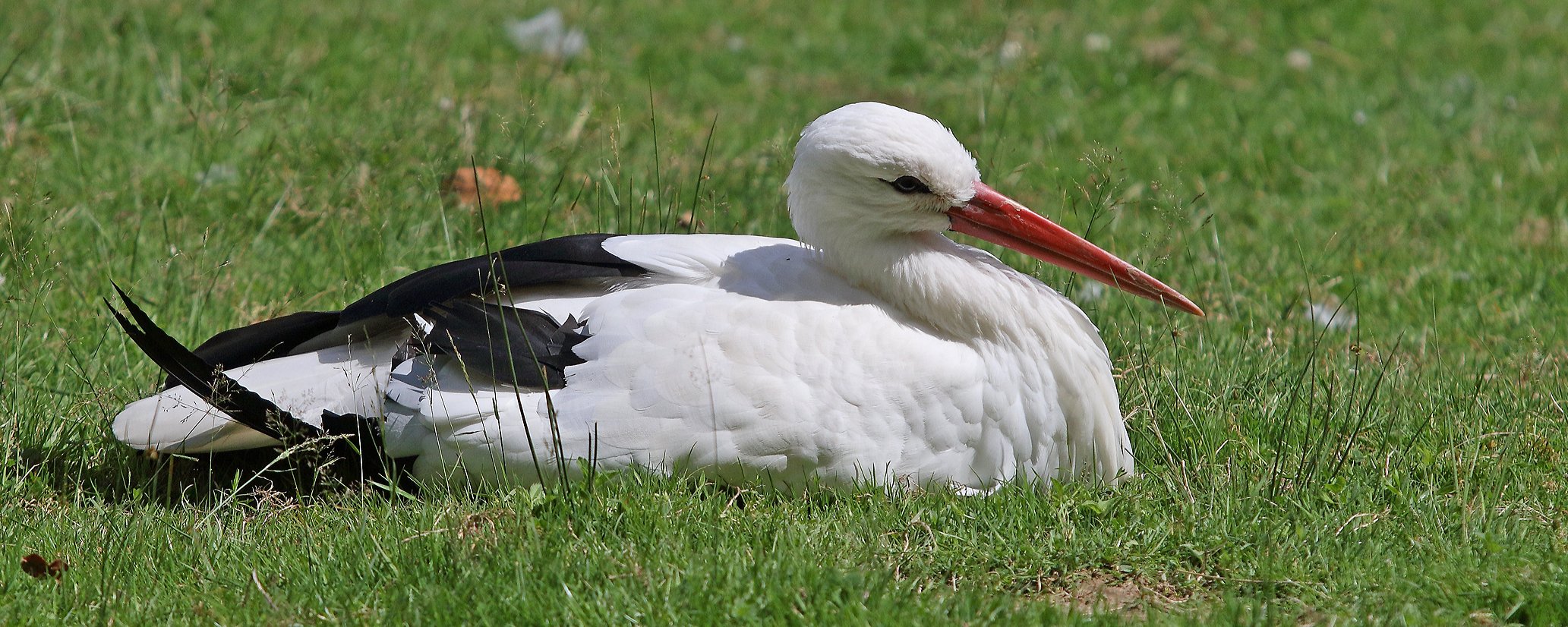Waterfowl Area
Storks live alongside ducks and geese in our bird meadow, and they are a beautiful sight with their splendid plumage, courtship rituals, and the raising of their young.
As waterfowl, ducks and geese are well adapted to a life in the water. They have webbed feet and their dense feathers are regularly waterproofed with a secretion from a well-developed gland, making them water-resistant.
Geese often forage for their food on land, while ducks are more inclined to search for it in the water. Their diets can be quite diverse, including plant material, insects, crustaceans, mollusks, and even fish.
In duck species, the males are brilliantly colored during courtship, while the females are inconspicuously gray-brown (camouflage during nesting). Towards the end of the breeding season, typically at the beginning of summer in our regions, ducks undergo a molt. Drakes shed their colorful plumage and adopt a more inconspicuous appearance, making them look very similar to females. In the autumn, they molt back into their splendid plumage, and courtship and mate-seeking rituals start anew.
In contrast, goose pairs often remain together for life. The genders have similar coloration and are thus hard to distinguish.
Duck and goose chicks are precocial, which means they are born with their eyes open and can move around soon after hatching. They can run and swim shortly after birth and stay with their mother.
![[Translate to Englisch:] Wassergeflügelanlage [Translate to Englisch:] Wassergeflügelanlage](/fileadmin/_processed_/7/f/csm_Graugans__6__2f95eb5f9e.jpg)
![[Translate to Englisch:] Ouessantschaf auf Wassergeflügelanlage [Translate to Englisch:] Ouessantschaf auf Wassergeflügelanlage](/fileadmin/_processed_/4/6/csm_Ouessantschaf_81691_2016-09-14_Sandy_Roedde_fdb5834590.jpg)

![[Translate to Englisch:] Höckergans](/fileadmin/_processed_/4/0/csm_Hoeckergans_2017-10-16_Sandy_Roedde__3__9e35ef1efa.jpg)
![[Translate to Englisch:] Graugans](/fileadmin/_processed_/0/d/csm_Graugans_2016-07-20_Anja_Gieseler_59a37fcea0.jpg)